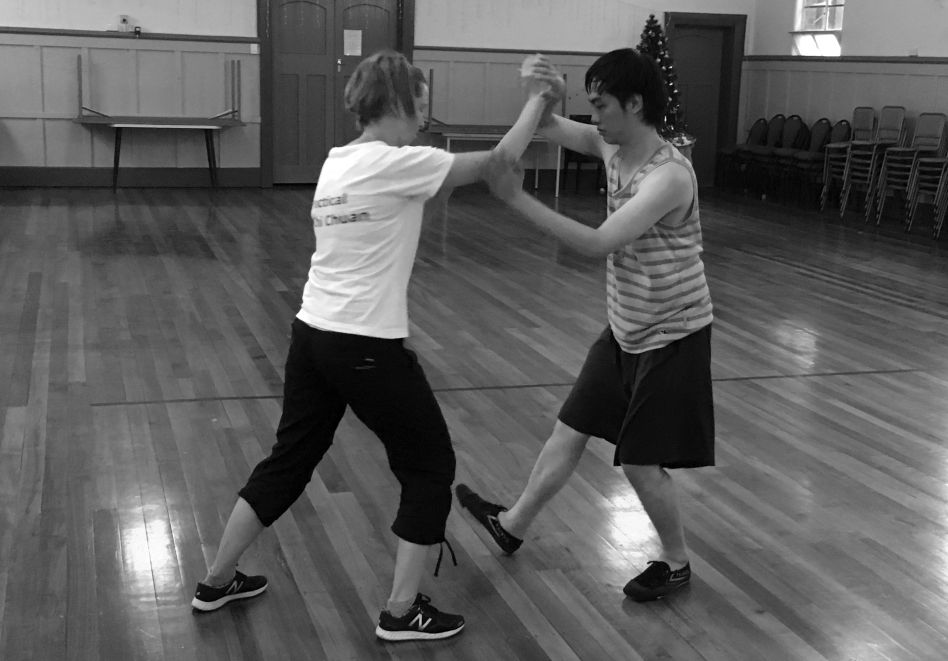
Q. What clothing do I need to wear for the courses?
A. “Loose comfortable clothing” – it needs to be adapted for the season, so for example a tracksuit in winter but shorts in summer. A committed student would normally invest in some authentic ‘kung fu’ trousers, adapted to this kind of activity. The standard kit would be white t-shirt and black trousers. Indoors, bare feet may be permissible, but normally one would want to wear flat shoes providing some support. Running shoes are not the most appropriate, unless they are of the more modern sort with ultra-flat soles.
Q. I think “Tai Chi” is a gentle health exercise, like Yoga – why do you talk about martial arts?
A. ‘Tai Chi Chuan’ has always been a martial art, but over the last few decades various teachers have emphasised and taught the health aspects, and their students never actually learnt the martial arts aspects. The art does indeed provide significant health benefits, but that is far from the whole story. Reading through the history of the art should provide some illumination.
Q. Can Tai Chi Chuan be useful for self-defence in the street?
A. The short answer is: Yes. BUT that assumes a high level of competence and extensive conditioning, which normally takes years to develop. Cheng Tin Hung and Dan Docherty were able to get students into full-contact fighting within 6 months, but that is a highly accelerated program which cuts many corners … and in the end there are never any guarantees.
Q. How can old weapons like swords be used in a modern context?
A. By adapting them to other objects. A stick may function, or a metal bar, even a broom. A book or a wine bottle can be a sabre.
Q. How do we know who is right, or wrong, about what exactly Tai Chi Chuan is?
A. There are five texts, referred to as the ‘Tai Chi Classics’, which are generally accepted as containing the ‘definition’ of what Tai Chi Chuan is – the so-called principles of Tai Chi Chuan.
Q. What’s the difference between the different schools of Tai Chi Chuan?
A. Remember the 5 components, which you can reference on this site. The main difference between the different schools relates to how many of these components the school teaches and practices. Every Tai Chi Chuan school will practice hand form, and quite a lot practice pushing hands, and weapons forms. Most however do not practice the applications of the forms, hands or weapons. Almost none are able to equip students for self-defence or full-contact fighting. Most have no kind of ‘nei gong’ (‘Internal Strength’) discipline. We also need to understand the lineage of Tai Chi Chuan, in order to see why different schools may have widely differing hand forms, for example.
Q. I don’t have much space at home to practice – what can I do?
A. You can of course practice outdoors, in your local park! There are many people in the parks doing exercise of different kinds. However, you can also do many things at home, notably static exercises of the ‘standing post’ variety. Many conditioning exercises, such as ‘running thunder hand’ can be done just in the space you stand up in. For forms, break them down into small steps that you can repeat in a confined space.
If you have questions that need answers, don’t hesitate to contact us